Annie Morgan Roddenberry has a unique connection to the Marine Discovery Center and its restored salt marsh.
Born in Orlando, she grew up in New Smyrna Beach and was a student at the former New Smyrna Beach High School that once sat on the same grounds now occupied by MDC.
Annie gained an early appreciation for this area’s coastal ecosystem. She also was influenced by a science teacher at the high school, Chad Truxall, who is now MDC’s Executive Director.
Annie would go on to college to study in the sciences and later revisit her old high school site to help construct a salt-marsh restoration as a young biologist. She worked with the Florida Fish & Wildlife Conservation Commission and helped return her former high school campus into a salt marsh, which existed on the site before the high school was built in the 1960s.
Read what Annie has to say about the salt-marsh restoration in this interview with MDC staff writer Lisa D. Mickey:
Q: Where did you continue your education?
A: I earned my bachelor of science degree in marine science and biology from the University of Miami (Fla.), and my Master of Resource Management degree with a focus in fisheries science from Simon Fraser University in British Columbia, Canada.
Q: What is your current title at the Florida Fish & Wildlife Conservation Commission?
A: I am a Biological Scientist III — a regional biologist focused on aquatic habitat restoration and conservation.
Q: How long have you been at FWC?
A: I started as a staff member in 2016 and just celebrated my sixth year at FWC. When I first started working with Jeff Beal in the summer of 2015, it was in a seasonal temporary position for a program called “Marsh Madness.” Jeff was FWC’s project manager for this restoration project at the time. As part of it, he wanted to work with the Marine Discovery Center, the Volusia County School District and to make sure we were getting students and the community out here to help monitor the marsh and be part of the project.
Q: When you look at the restored salt marsh and the surrounding grounds now, what comes to mind?
A: What comes to mind is life, renewal and this idea that not only is there biological life on this site where there previously was not, but there’s also a lot of community life that has come as a result of that. This is a project that people have seen play out over the years. It’s also an attraction where people come to watch birds, ride their bikes, bring their kids to play, walk their dogs and a site for MDC’s summer camps to hold activities. There is life out there in terms of us monitoring fish and plant communities, and then there’s a larger community life that’s come from this restoration project.
Q: What was your original role with the project?
A: My role was to serve as the coordinator of Marsh Madness and this connectivity program and to be the liaison between FWC, MDC and Volusia County Schools. I worked with Volusia County environmental teacher Louise Chapman and Marine Discovery Center Executive Director Chad Truxall to get this site on the list of destination sites for Volusia County Schools’ biology classes. The high school kids came here to get hands-on, feet-wet experiences. They would learn about fiddler-crab populations and plant diversity. We had them drawing the flowers in the marsh to counting fiddler-crab burrows and really looking at these ecosystems. They would be out in the marsh with the seine net, so they got wet. It gave us great data, because there was a lot of monitoring happening, but it also provided a rich layer of community engagement.
Q: What did you learn from Jeff Beal as a young biologist and what did you learn from this project that helps you with your work at other FWC restoration sites today?
A: I was very fortunate to shadow Jeff through this project and several others as I was coming into FWC. He has such a wealth of experience with different types of habitat restoration projects. This was a fairly sizable one on a 5-acre site. The idea was to bring it down to tidal salt-marsh grade for this habitat. Jeff really showed me the power of working with our other agency partners, such as the St. Johns River Water Management District, NOAA, the U.S. Fish & Wildlife Service Coastal Program, MDC and Costa sunglasses. All of these entities were important in making this project a success. I learned how to carry this project through to construction and how to get community engagement for monitoring. I also learned how to continue making sure this project had the outcomes we intended, even through unexpected weather events. We were working our way through the project and linking the ecological principles that we know with this specific site and project.
Q: Are you still doing these same things with your other FWC projects?
A: Very much so. We take these over-arching ecological principles, but each site and project is different. We have to be adaptable, yet we still want habitat benefits and habitat outcomes.
Q: Could you visualize then what this project would become?
A: This was probably one of my biggest lessons in project visualization. I had a tough time seeing how my old high school site, which used to have a track and portable classrooms, would become like the adjacent salt marsh and mangrove systems. I knew in theory it could, but to really see it unfold, and in a timeline in which it happened, was absolutely tremendous! When we started excavation, this was a moonscape with dry and sandy material. There were excavators and dump trucks out here hauling dirt into a big pile on the side. To think that this would become a saltmarsh teeming with life was a little bit far-fetched, but as we started getting closer — and once we let the water into the restored marsh and got the plants in place — you started seeing these glimmers of green. Increasingly over time, it got greener and denser, and there were more birds, crabs, fish. It truly filled in and it was amazing to see. The timeline was shorter than I expected. I still marvel at what it looks like today, seven years later. We’re still seeing new organisms find the marsh and we’re still seeing the system change as it grows up.
Q: Were there any surprises with this project?
A: In terms of project process, I think our biggest surprise was a significant rain event right after we finished an excavation. It moved dirt around where we didn’t want it and we had a mud slide from our fill material. So, we had some project expenses and steps we weren’t anticipating or had budgeted for.
Q: What were the challenges that you and Jeff were dealing with in the restored marsh?
A: One challenge we always face with this kind of project is communicating the value of the habitat restoration. Sometimes, people are resistant to change and especially when they feel like this is their backyard – or former high school. We liken it to renovations on your home. It’s messy at first. It doesn’t always look good at first, but once you get the finished product, it’s almost like you can’t remember what it was like before. We wanted to make people aware of the value of what we were doing. One of the benefits of the Marsh Madness program was we created this set of high school ambassadors and involved the community with the planting of the restored marsh. That provided a sense of community ownership of the marsh and was a tool we used to help the public understand what the site was intended to do or could be.
Q: There were about four plantings and some 70-plus volunteers who came out each time to help put plants into the ground. What was it like to look out and see people from the community out there working and willing to crawl around in the mud and sand to help plant the marsh?
A: It was so powerful to have those plantings. We did them in August and September, which are notoriously difficult times of the year in Florida to have people out planting. Some people brought their kids or their parents or their neighbors. They made it a family event and a neighborhood event. They brought the Audubon chapter and the Costa employee group. It was really neat to see people get excited about this and literally get dirty in the name of restoration, and then for them to come back to the site over and over to see how their plants were doing and how the site was growing.
Q: Do you remember a specific time when you saw the marsh coming together with plants, birds and all the life out there?
A: Two memories come to mind. The first was when we breached the perimeter of the site. The inner portions of the site had already been dug out and were dry because we had not yet opened them up to the adjacent waterways. We had a turbidity curtain around everything, but we also had a dirt perimeter. Everything had been graded and dug and now it was time to let the water in. It was 4:30 in the afternoon and they were getting ready to breach the dirt perimeter and let the water into the marsh. I watched the excavator open up the berm and let the water pour into the site. It just felt real. That next morning, 15 hours later, this site was full of wading birds. There were egrets, herons, ibis and they found this new site overnight. There wasn’t any vegetation material on it yet, but somehow, the birds knew it was something of interest. It was really neat to see how quickly the wildlife showed up at the site.
The other time was our very first seine pull. A lot of times we use a seine net to monitor fish communities in restored areas. It samples the entire water column from the bottom sediment to the top, so it’s used for shallow areas. In the first pull we did in the marsh a couple of months after the construction was completed, we caught a juvenile spotted sea trout. We know that’s one of our very important species in this area’s fisheries and in Florida, and our marsh was already providing nursery habitat for these young fish.
Q: How was this site measured over time and how did that shape the management of the marsh?
A: We had a couple of different methods for assessing the site and evaluating how things were filling in. We worked with our partners at the University of Central Florida, the Marine Discovery Center, Stetson University, the water management district and we looked at plant communities. We did fixed-location surveys of plant communities and understanding percent cover, species composition, height of plants and how the plant community was coming in and what it looked like. We did that twice a year for the first five years. We also looked at the fish and nekton communities – things floating and using the water columns, such as fish, shrimp and crabs. That’s why we used seine nets in fixed locations in the marsh and tried to understand the species variety. We also did that twice a year for five years. Each time we went out for the fish sampling, we would see species in our seine net that we had not previously seen. As the marsh grew in and the plant communities filled in, new species were starting to use it. We wanted to learn more about the marsh residents and the marsh transients. The residents were the fish and critters who were going to live in this marsh for their entire lives. The marsh transients, such as snook, want to use the habitat for part of their life history, but then they will also use other habitats. Seeing a mix of those species in our fish sampling was a good indication that we had created quality habitat.
We’ve also looked at above-ground/below-ground biomass of the plants and how much root material is there when compared to material above ground. That’s an indicator of marsh health. We’ve worked with the U.S. Geological Survey to have long-term sedimentation elevation tables. Those stations are still out there and we’re monitoring them every year. They give us the long-term elevation measurements of this site and how it compares to surrounding reference marshes that have not been disturbed. We want to know if the elevation in our marsh is changing more quickly or more slowly than an old marsh?
Q: This restored marsh at MDC was twice tested by hurricanes. What did you learn from that?
A: We have learned from this site and others that for the first two years, there’s some vulnerability. After that two-year mark, things pretty much settle in. There’s always going to be a dynamic nature of these sites, but that’s what they’re for, to provide a living buffer. You may lose some plants or have some erosion or some shifting here and there, but overall, the integrity of this natural feature is maintained. Our living shoreline demonstration area was not very old when Hurricane Matthew hit. We had 90-mph winds that hit the site directly and everything held up incredibly well. We saw minimal erosion and all of our structures stayed in place. The plants regrew quickly. This is exactly what we’re trying to show people. We want this site to be a destination where they can come to see what a living shoreline looks like and to also show them what it looked like after a hurricane. We had to do minor cleanup and plant trimming, but overall, this site held up very well after two hurricanes.
Q: Do mangrove trees typically take over salt marshes or was this an anomaly?
A: We expected there would be a mixture of mangroves and salt-marsh grass at this site because that’s what’s in salt marshes adjacent to our site. We typically plant these sites with Spartina Alterniflora, knowing that there will be a mixed community resulting later. Spartina is inexpensive, easy to plant, easy to transport and sort of paves the way for a more diverse natural plant community to fill in through natural recruitment. It wasn’t terribly surprising that we have quite a mangrove forest out there now. What was surprising to me was how quickly they grew! We started seeing mangroves in the first year of the marsh’s existence and now there are mangrove trees out there that are well over my head. This site was intended as a donor marsh to provide Spartina Alterniflora to other restoration projects. Partners are coming here to harvest this plant and take elsewhere. Increasingly, our area of Spartina is diminishing, so now, we are also a mangrove donor marsh.
Q: What did you learn from the ecological succession of our marsh, with one dominant plant group replacing another?
A: One of the nice things about this site having low-marsh, mid-marsh and high-marsh habitat is that we have a variety of plants that we can use for donor purposes. We can also use high-marsh species, such as sea oxide daisy and the salt bush. We’ve been able to transfer those species to other sites.
Q: Is there any ability or interest in growing seagrass in our marsh?
A: Dr. J. Cho at Bethune-Cookman University has talked to us about seeing if we could do some seagrass grow-out in the marsh. It hasn’t panned out yet, but there is some discussion with partners about potential uses of this space. There are also a lot of questions about the goal. Is the goal to feed manatees, or to have a healthy marsh community, or to have a healthy donor site of plant material? What versions of seagrass growing on this site would best accomplish that goal? Would it be a nursery site to grow out in tanks and take elsewhere? Would it be a mesocosm where you have seagrass actually growing in the shallow marsh area that is providing forage, but may not be as productive as a donor site? We have definitely seen evidence of the manatees munching on Spartina in this marsh.
Q: Are the projects you work with through FWC similar or very different to this marsh at MDC?
A: The principles are the same in that we want to create healthy habitat and there are certain techniques that we know help achieve that. This one takes higher elevations down to a targeted elevation, plants the area with Spartina, and allows nature to fill in from there. We have definitely used that technique on different sites in the region, but each project and each location is very unique. That’s part of the fun and we have really tangible outcomes. This marsh now exists and you can visit it, see it, smell it and that’s a very rewarding thing for all the partners involved.
Q: Are your other projects restoring the land of former structures or other things?
A: It’s a variety of things. We also do oyster restoration, stream-bank and spring-run restoration. In Northeast Florida, there’s a lot of mangroves, salt marsh and some seagrass restoration. We work primarily on public land, so we’re often working in state parks, wildlife management areas and conservation lands. There’s usually a public access component to our projects. One thing that makes this site unique is that the Marine Discovery Center and the Artists’ Workshop are on the property every day. These two partners have programs that are showcasing this project daily through kayak tours, Plein Air art festivals and children’s camps. That’s a really powerful tool because there’s a sense of community ownership. There’s a feeling of connection when you’re out in nature. Having partners who are actively involved in programs on one of our restoration sites is a wonderful thing! Not all of our sites have that. Many of them have public access, but there’s not always a direct on-site tour aspect. The idea for many of our sites is that you don’t even know it’s a restoration site. Having MDC and the Artists’ Workshop here ensures that people know the history of this site.
Q: What makes you most proud of this project?
A: I think getting to watch the marsh fill in makes me really proud and to think we played a role in creating this mosaic, as well as having this site as a source of material for other projects and other restoration work has been fulfilling. We’ve had a number of different partners come in to do research. This site is a resource for people to come learn and understand the dynamics and biodiversity of marshes, habitat issues, but it’s also a source of physical materials, such as plants and volunteers. This is a place where people like to come to learn, to be a part of restoration and then to share that with their networks.
Q: You’re a mom to young children now. You weren’t a mom when you were working on this project. What do want your children to know about a place like this?
A: Motherhood has put a different spin on restoration for me that I was sort of dancing around before. When we talk about restoration, there’s an assumption that we’re restoring to a certain time period or a certain memory or a certain picture that we have. That’s what we hear a lot from our stakeholders, too. Sort of, “Back when I was a kid, it was this way and why can’t we get back to that?” Having kids has really put into the forefront of my mind that we’re moving into a different world and, no matter how much construction we do on a site, we’re never going to get back to where we were in a past time in Florida. We have more people here now. We have different developments. We have different pressures, so how do we restore function in this different world moving forward? I think having that mentality when you’re doing restoration can really change a project. You’re not trying to go back to what an aerial photo in 1943 showed. You’re trying to go back to the function that these habitats were providing before there was some disruption. Given what we know about sea-level rise, climate change, vulnerability and existing infrastructure, how do we build these coastal habitats and give them the ability to move, shift, change and be dynamic moving forward? I have colleagues who sort of measure the progress of a site with their kids in the picture, showing the changes as the kids get older.
Q: Is there anything in particular you want visitors to understand about what they see when they visit this restored marsh?
A: One of the things I want people to understand about all of our restoration projects is that, ideally, they only get better with time if we do them right. The people who came out and helped with the initial plantings see that. They remember the few sprigs in the ground and then how it exploded and five years later, it was even more amazing. The local Audubon chapter came in and added a bird-friendly plant garden on the site and the Marine Discovery Center added an amphitheater. Not only has the site grown, but the marsh itself has grown. We know that these habitats are going to change over time. We know that there’s climate change happening that’s impacting the composition of our communities and the types of plants and animals we see in different areas. We’re not evaluating whether that’s good or bad on these projects. We just want to make sure we build the right elevations and the right system so it can accommodate these changes over time.
Q: Is there anything left to do or to monitor on this restored site?
A: There is always room to learn at these sites. There is also the need for more long-term monitoring on these projects. A lot of time when we get a permit or grant funding, we have a certain amount of money for short-term monitoring just to make sure everything is running well and growing appropriately, but after that, sometimes it’s hard to find support to go back five, 10, 15 years later and see how the project is doing. There is always room to go back and repeat some of the original monitoring or to do some different monitoring. We’re still looking at sedimentation elevation tables, pulling seine nets here and there, and we’re still harvesting materials, but not as rigorously as we did in those first years. If groups come in and want to do that, why not? Even as we pull out materials for other projects, that helps us understand how we’re doing.
Q: How did the naming of the observation mound become Mount Morgan?
A: That was a fun surprise from Jeff Beal, the project manager. In his design of the marsh, Jeff really thought out a variety of different features of this site. He named a few features after people who were engaged in the project. There’s a Truxall Pond out there, after MDC’s Chad Truxall, and there’s a Schmoele Hole, after former MDC boat operations captain Scott Schmoele – which is a hole in the marsh that never really drains. Then there’s Mount Morgan, where the fill material ended up. I only regret that we didn’t get to name something after Jeff out there. He had some fun designing the site.
Q: You must be pleased to see what the restored marsh has become.
A: I’m just excited there’s so much activity on this site. Even when we started the salt-marsh restoration, there was pretty much nothing else on the site other than the MDC building. Since then, there’s a trail system, a workout station, an amphitheater with community movie nights and concerts, the bird garden, a native plant garden, a composting area and there’s going to be a biking trailhead in the near future. Just having this as one additional feature on a widely attractive site by a lot of different user groups is absolutely tremendous. That’s what makes this site so special. There’s a very broad base by which to attract people and we welcome all the different types of input.
Q: The educational programming, on top of a thriving restoration site, seemingly brings this place to life.
A: It’s true! That’s why I’m here. The reason I do this now as a profession is because I got these educational opportunities as a student. I just fell in love with these ecosystems, the environment and the idea that we have a lot to learn from nature and we can live with nature instead of up against it. How can we integrate these nature-based solutions into our lives and our communities so that there’s mutual benefit? I think that’s so fascinating and we have room to grow. I appreciate that this site and many of our other projects may be used as a tool to hopefully inspire others to also take an interest.

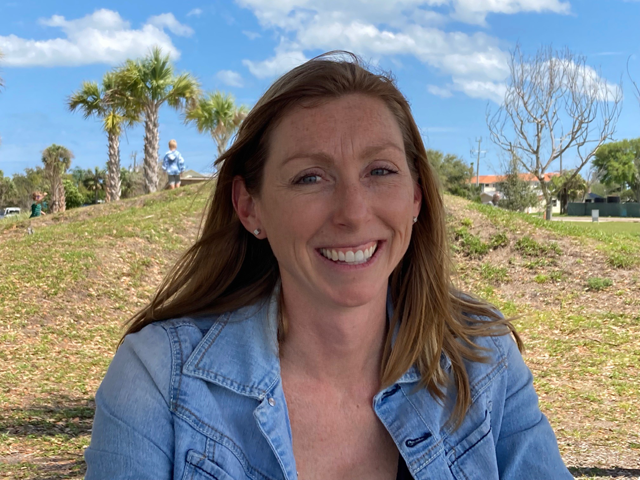
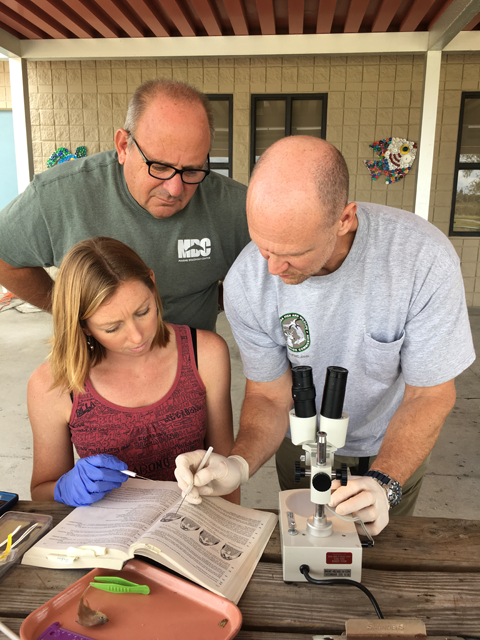


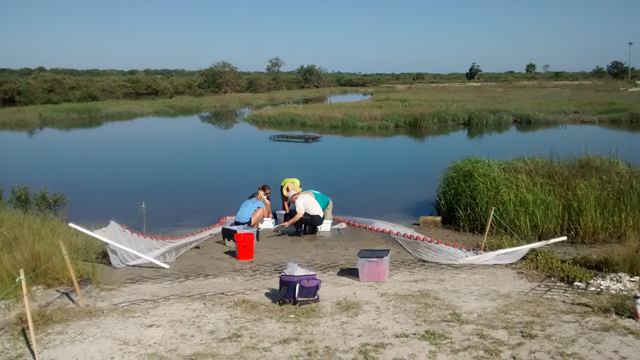
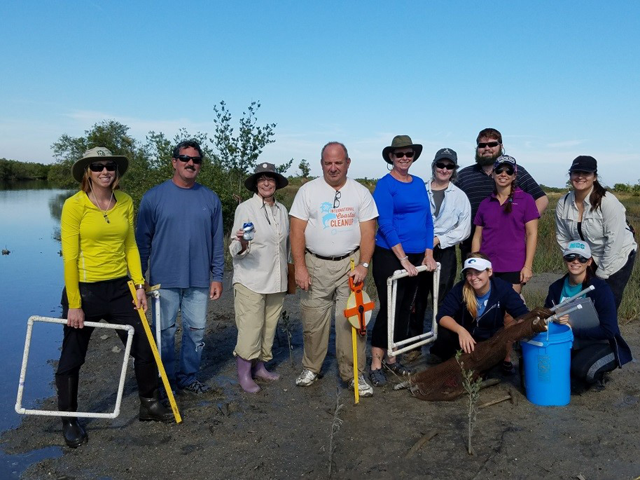
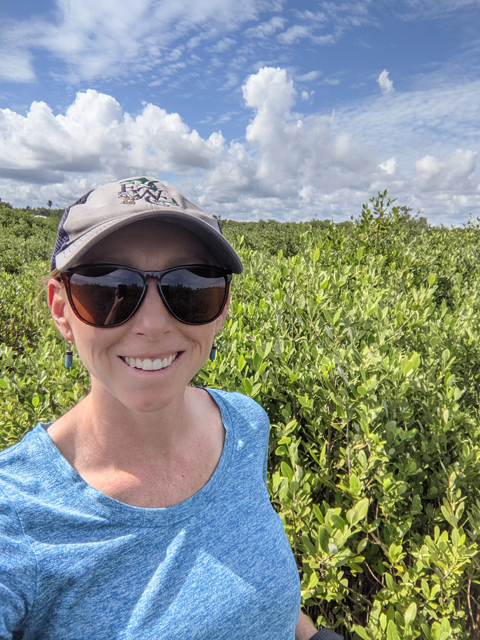
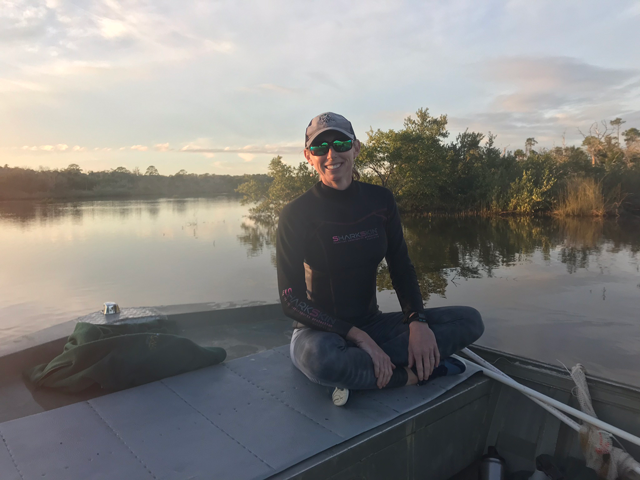
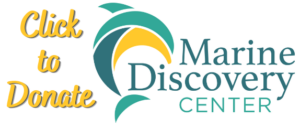
Follow Us!